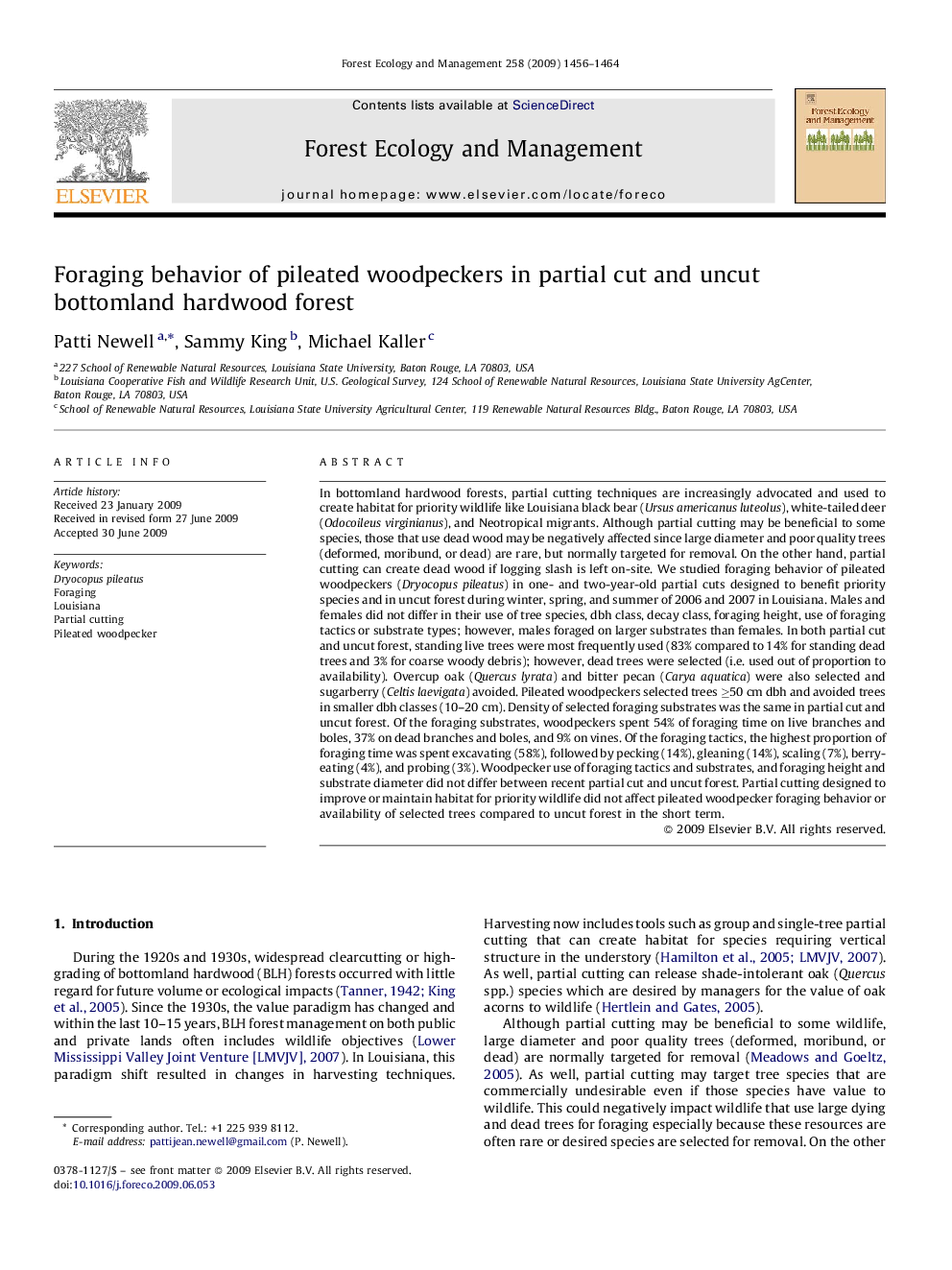| کد مقاله | کد نشریه | سال انتشار | مقاله انگلیسی | نسخه تمام متن |
|---|---|---|---|---|
| 88985 | 159328 | 2009 | 9 صفحه PDF | دانلود رایگان |

In bottomland hardwood forests, partial cutting techniques are increasingly advocated and used to create habitat for priority wildlife like Louisiana black bear (Ursus americanus luteolus), white-tailed deer (Odocoileus virginianus), and Neotropical migrants. Although partial cutting may be beneficial to some species, those that use dead wood may be negatively affected since large diameter and poor quality trees (deformed, moribund, or dead) are rare, but normally targeted for removal. On the other hand, partial cutting can create dead wood if logging slash is left on-site. We studied foraging behavior of pileated woodpeckers (Dryocopus pileatus) in one- and two-year-old partial cuts designed to benefit priority species and in uncut forest during winter, spring, and summer of 2006 and 2007 in Louisiana. Males and females did not differ in their use of tree species, dbh class, decay class, foraging height, use of foraging tactics or substrate types; however, males foraged on larger substrates than females. In both partial cut and uncut forest, standing live trees were most frequently used (83% compared to 14% for standing dead trees and 3% for coarse woody debris); however, dead trees were selected (i.e. used out of proportion to availability). Overcup oak (Quercus lyrata) and bitter pecan (Carya aquatica) were also selected and sugarberry (Celtis laevigata) avoided. Pileated woodpeckers selected trees ≥50 cm dbh and avoided trees in smaller dbh classes (10–20 cm). Density of selected foraging substrates was the same in partial cut and uncut forest. Of the foraging substrates, woodpeckers spent 54% of foraging time on live branches and boles, 37% on dead branches and boles, and 9% on vines. Of the foraging tactics, the highest proportion of foraging time was spent excavating (58%), followed by pecking (14%), gleaning (14%), scaling (7%), berry-eating (4%), and probing (3%). Woodpecker use of foraging tactics and substrates, and foraging height and substrate diameter did not differ between recent partial cut and uncut forest. Partial cutting designed to improve or maintain habitat for priority wildlife did not affect pileated woodpecker foraging behavior or availability of selected trees compared to uncut forest in the short term.
Journal: Forest Ecology and Management - Volume 258, Issue 7, 15 September 2009, Pages 1456–1464